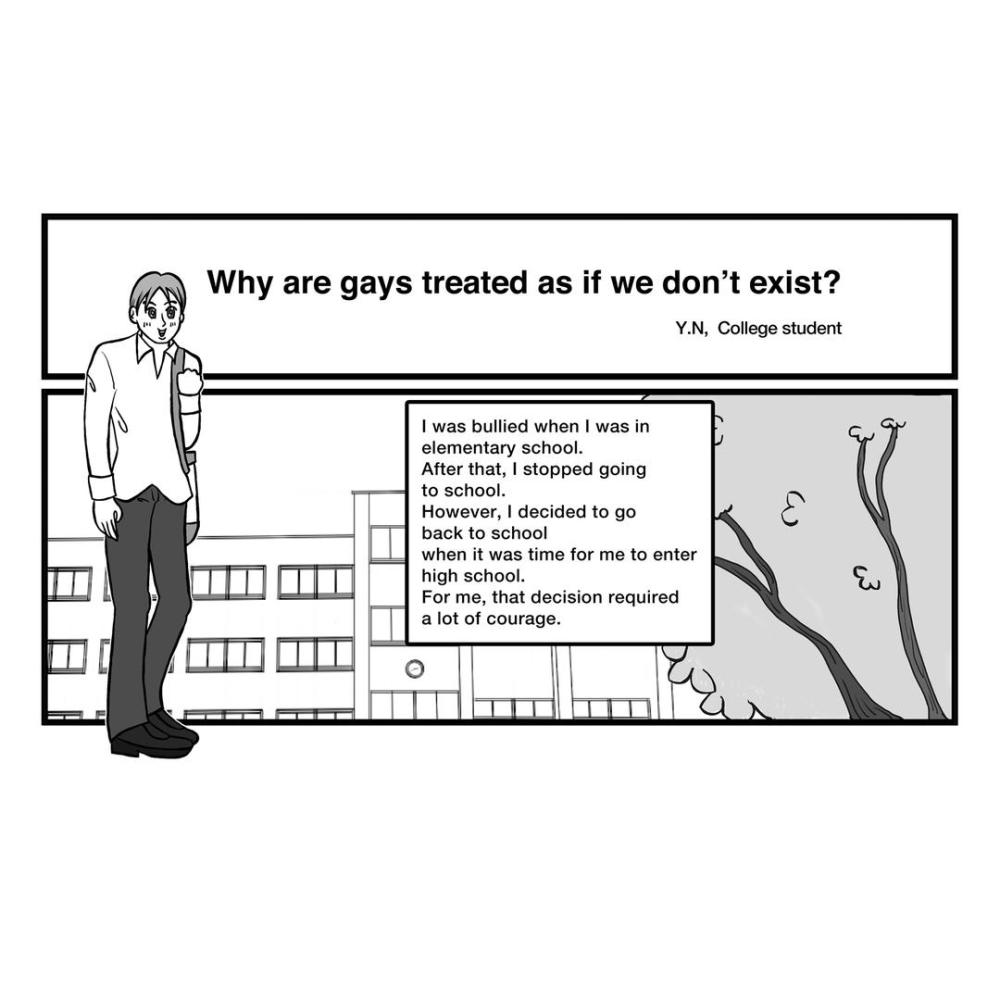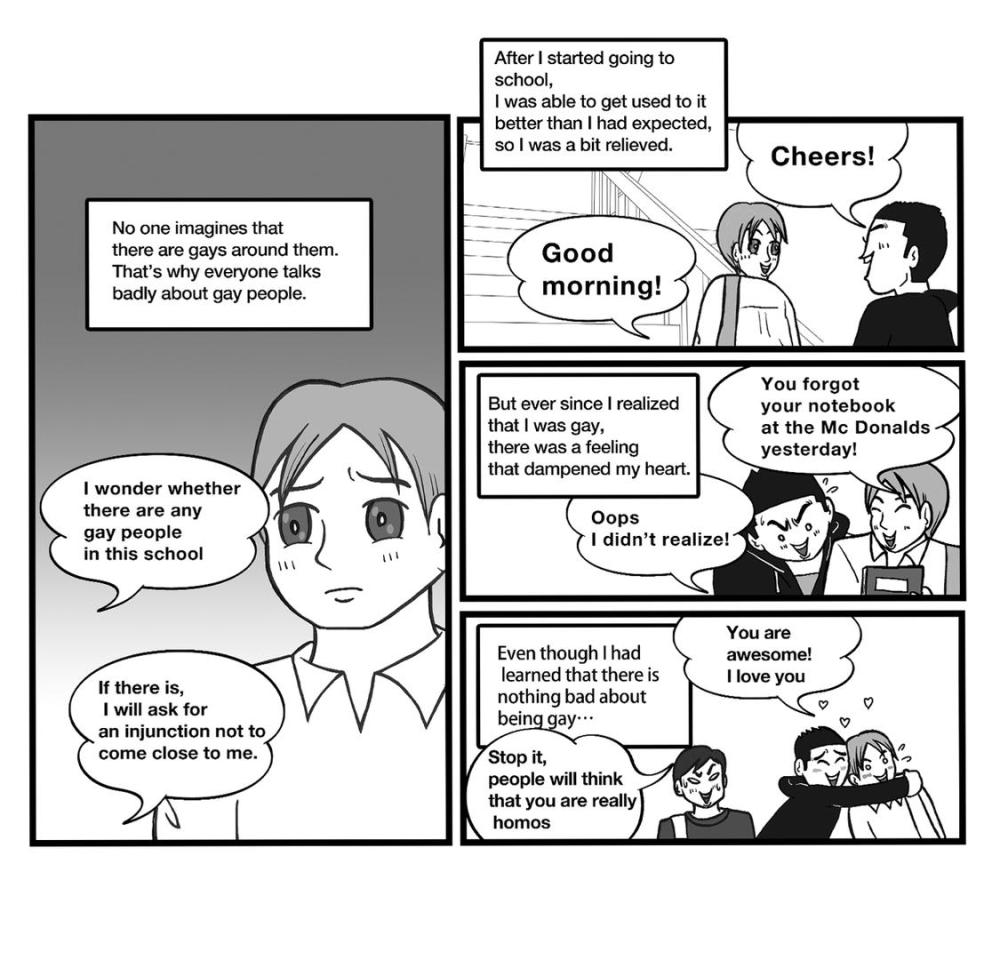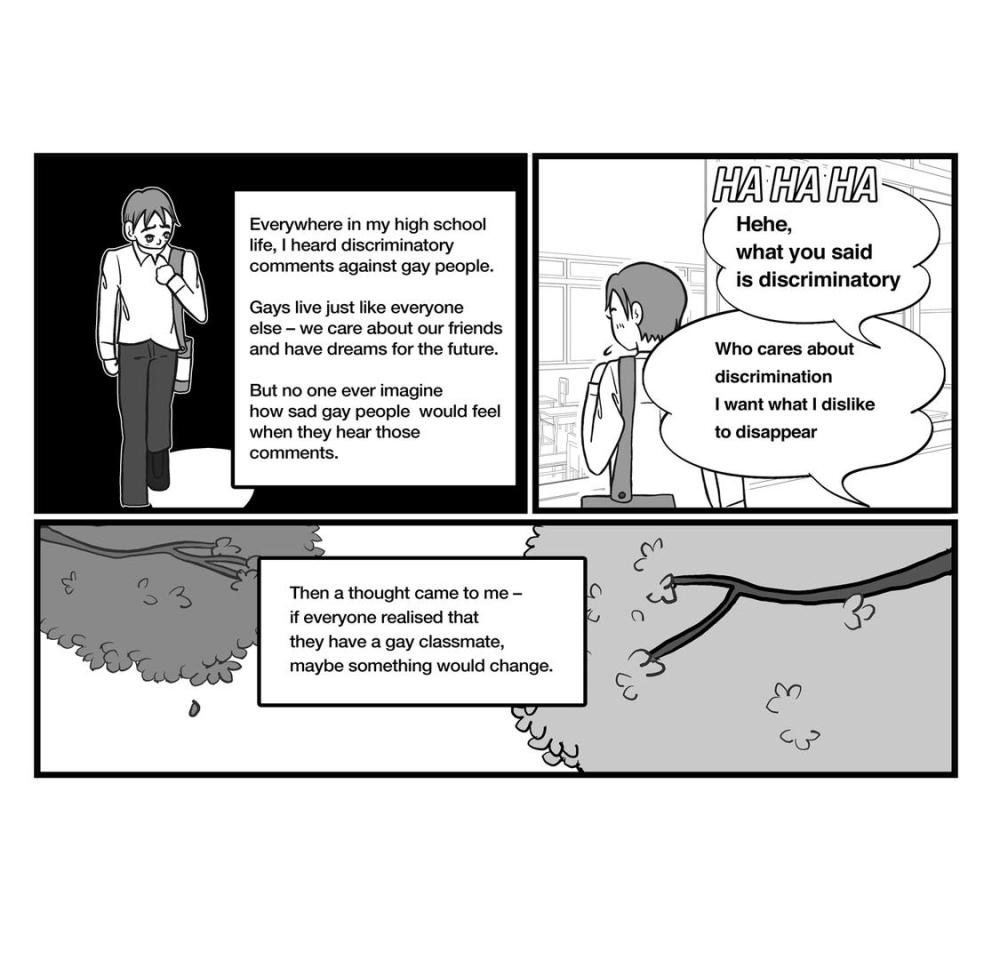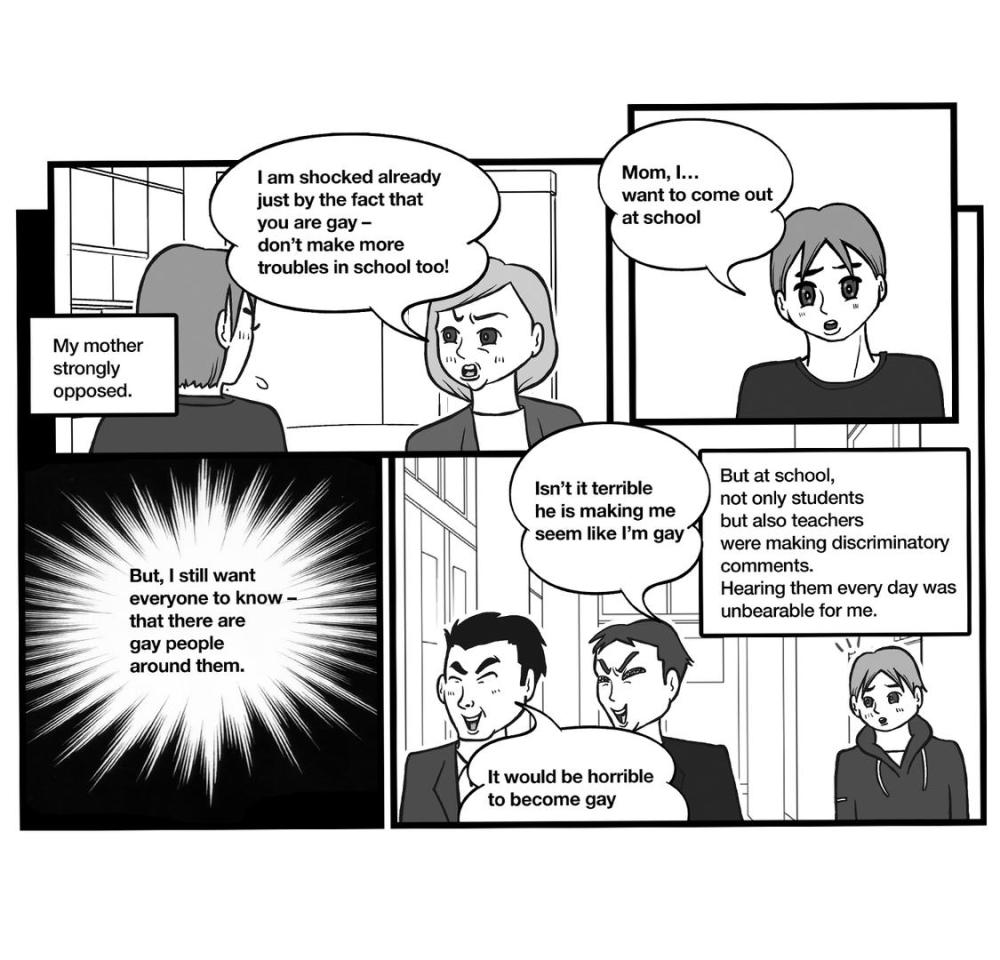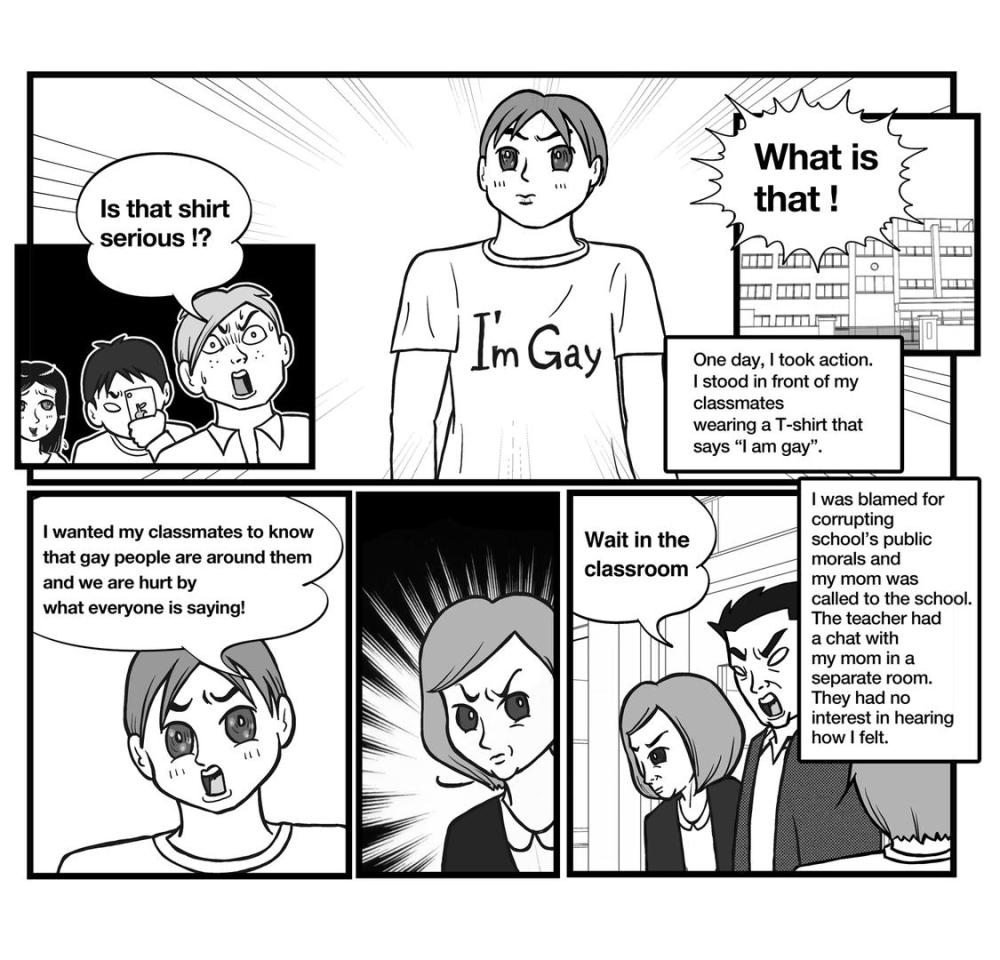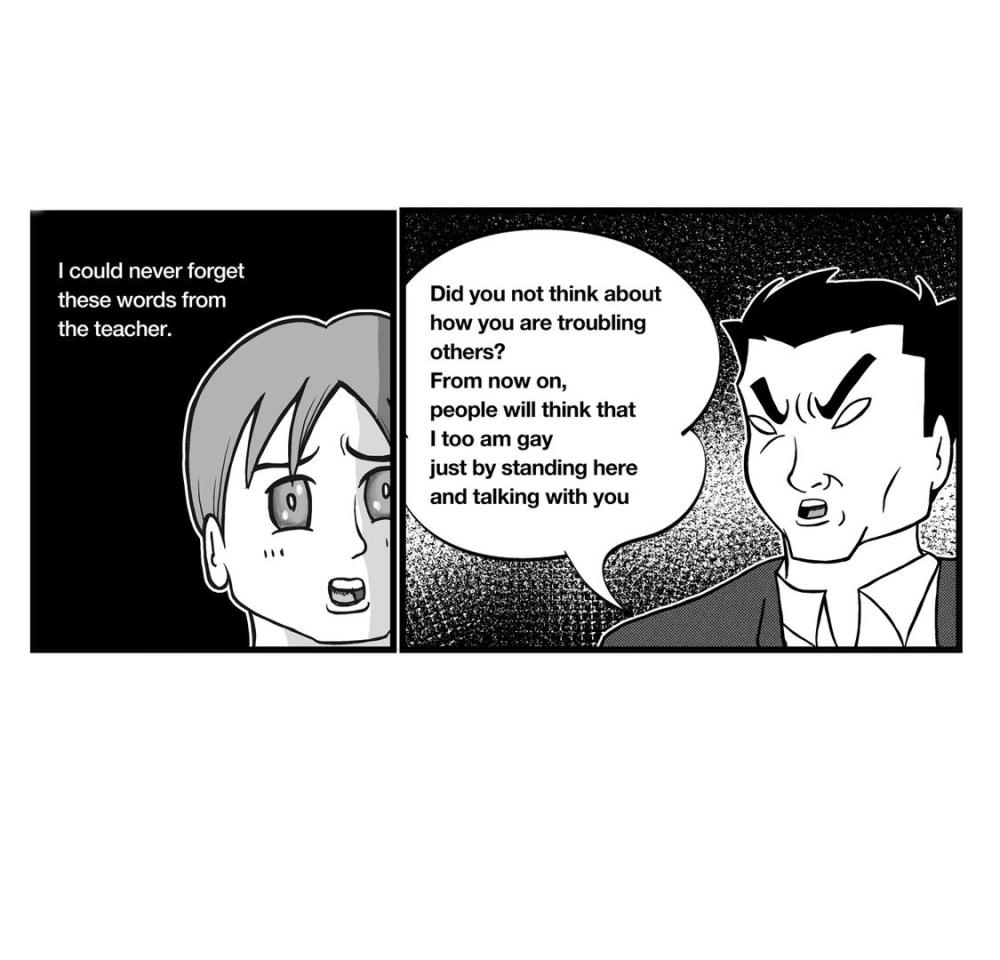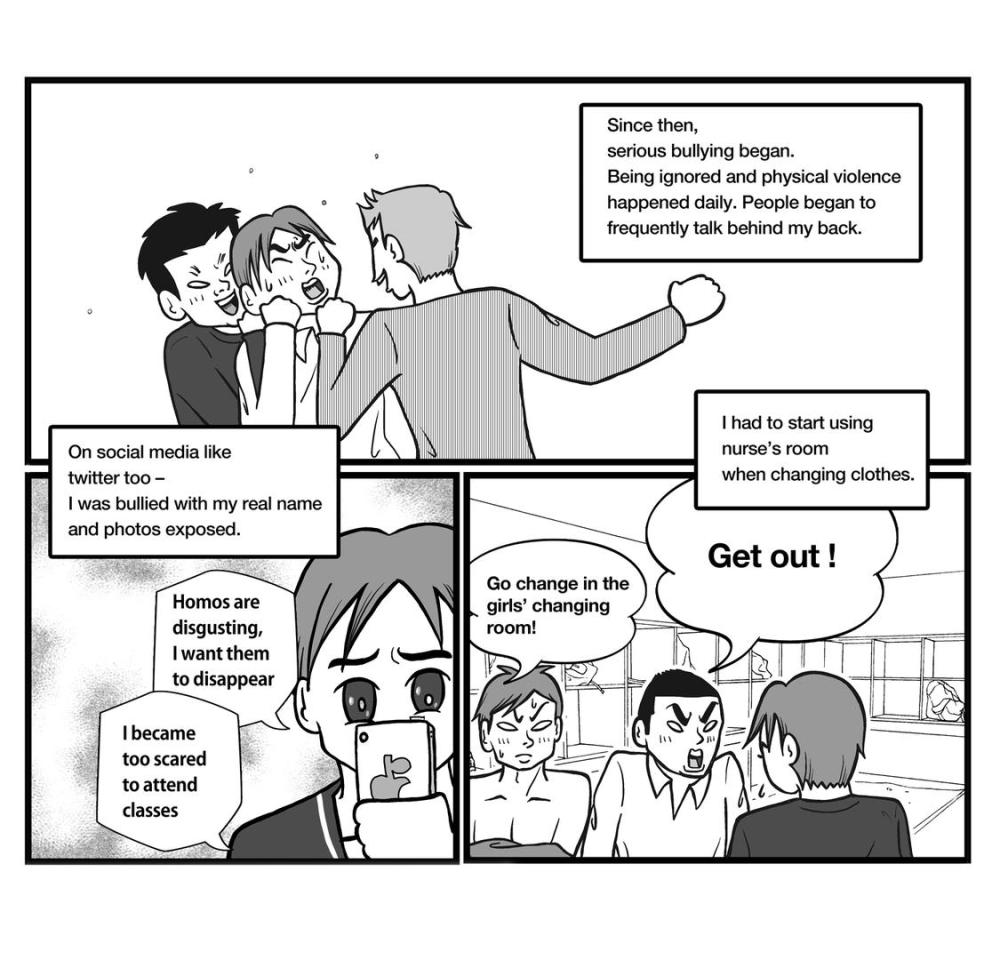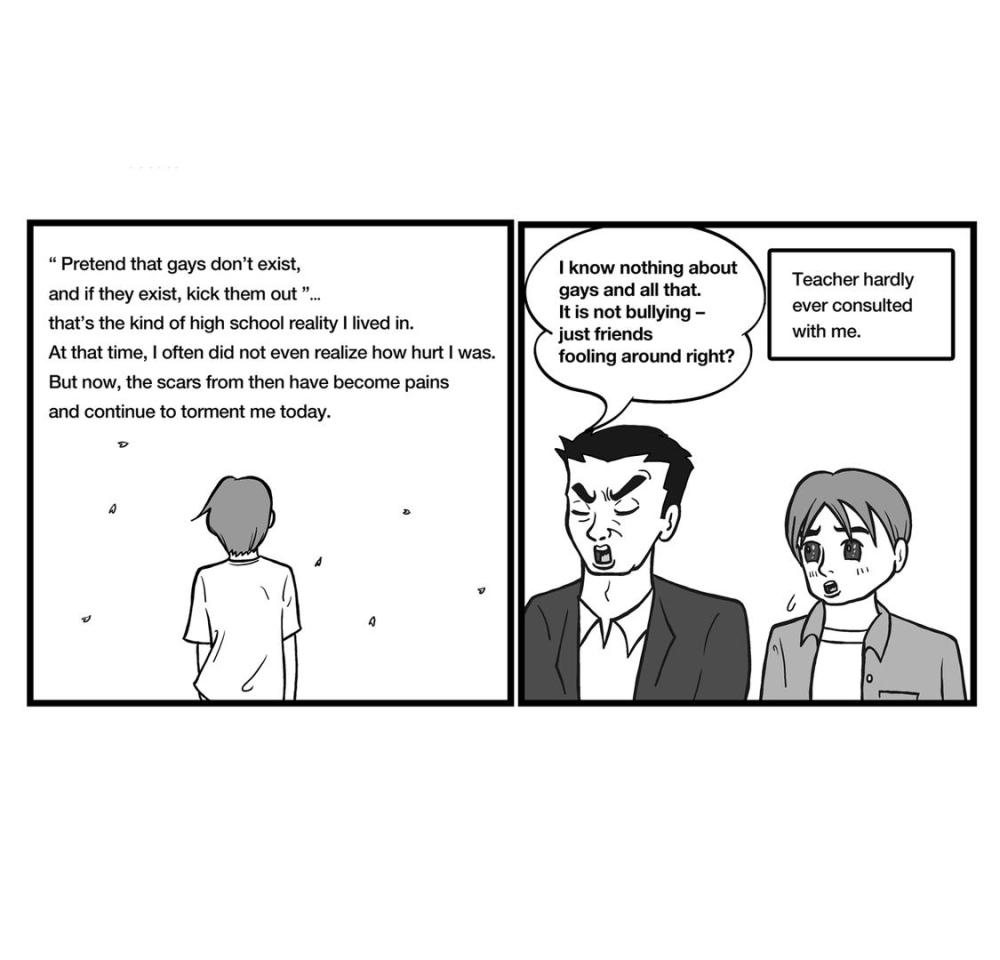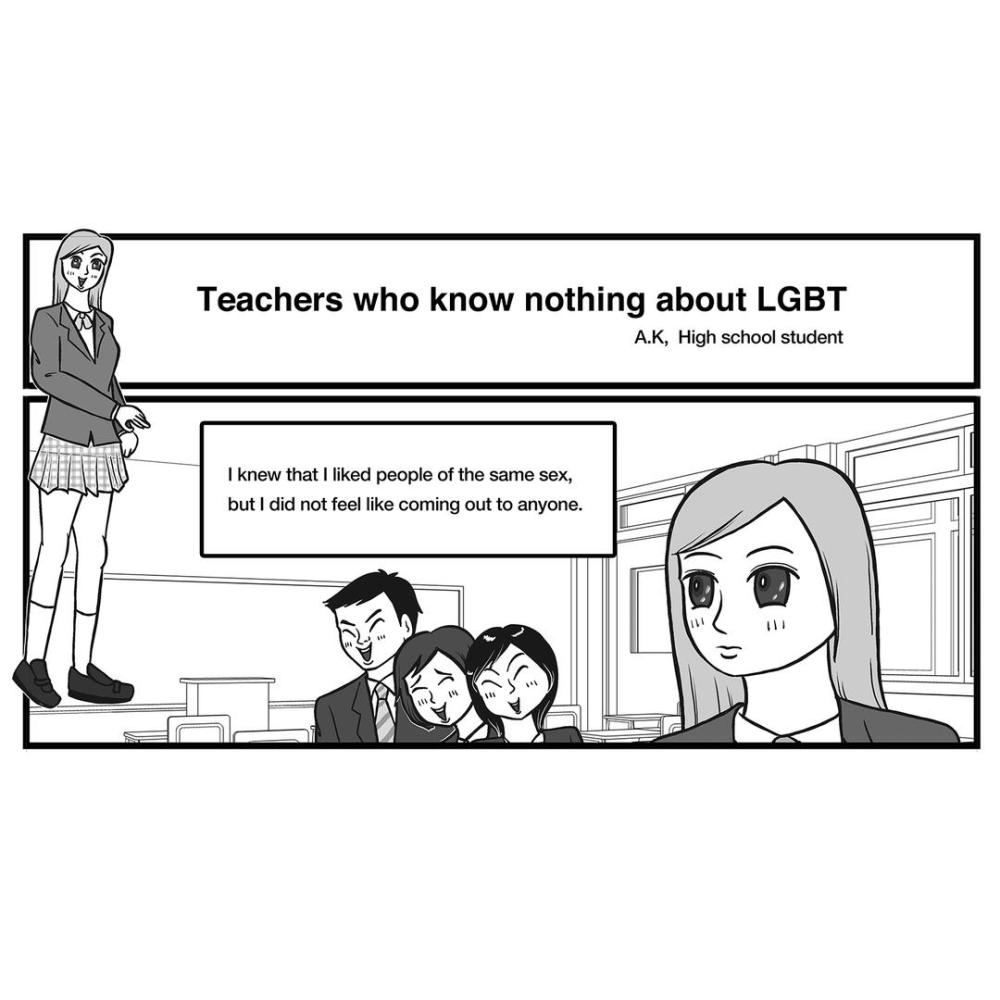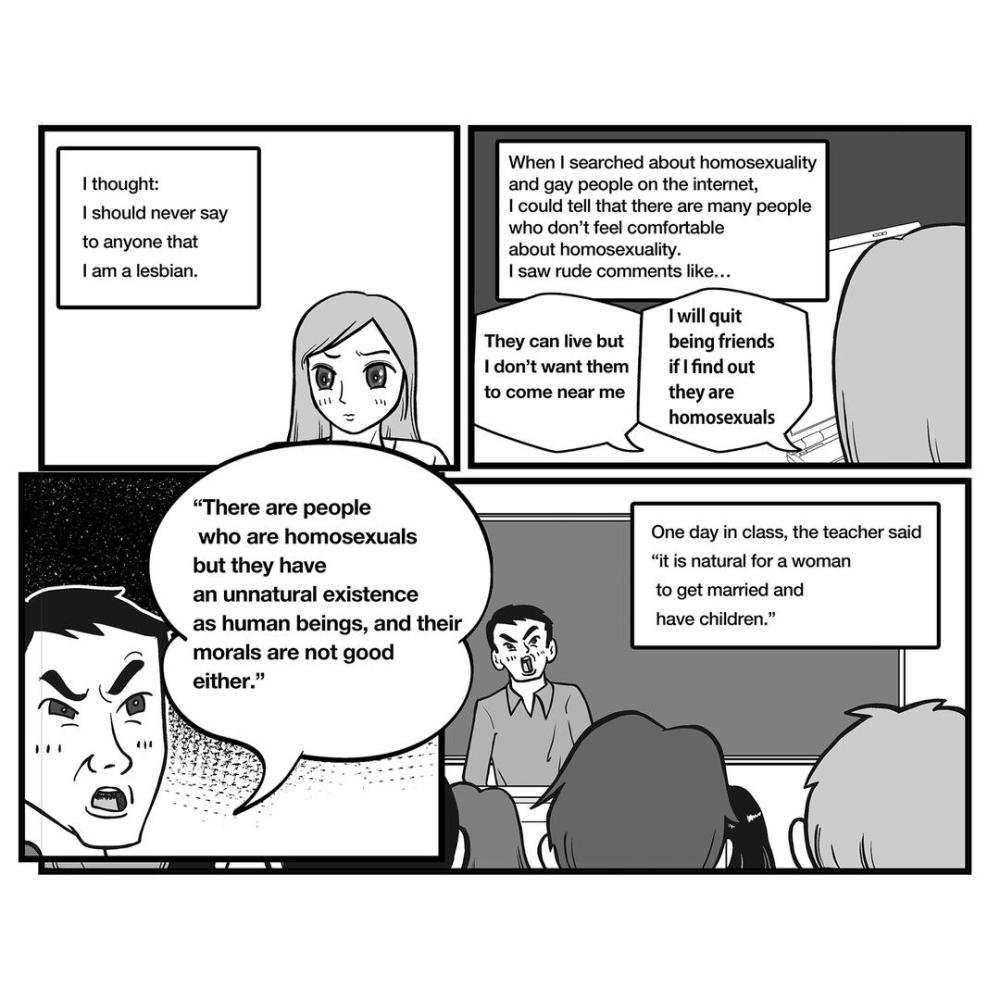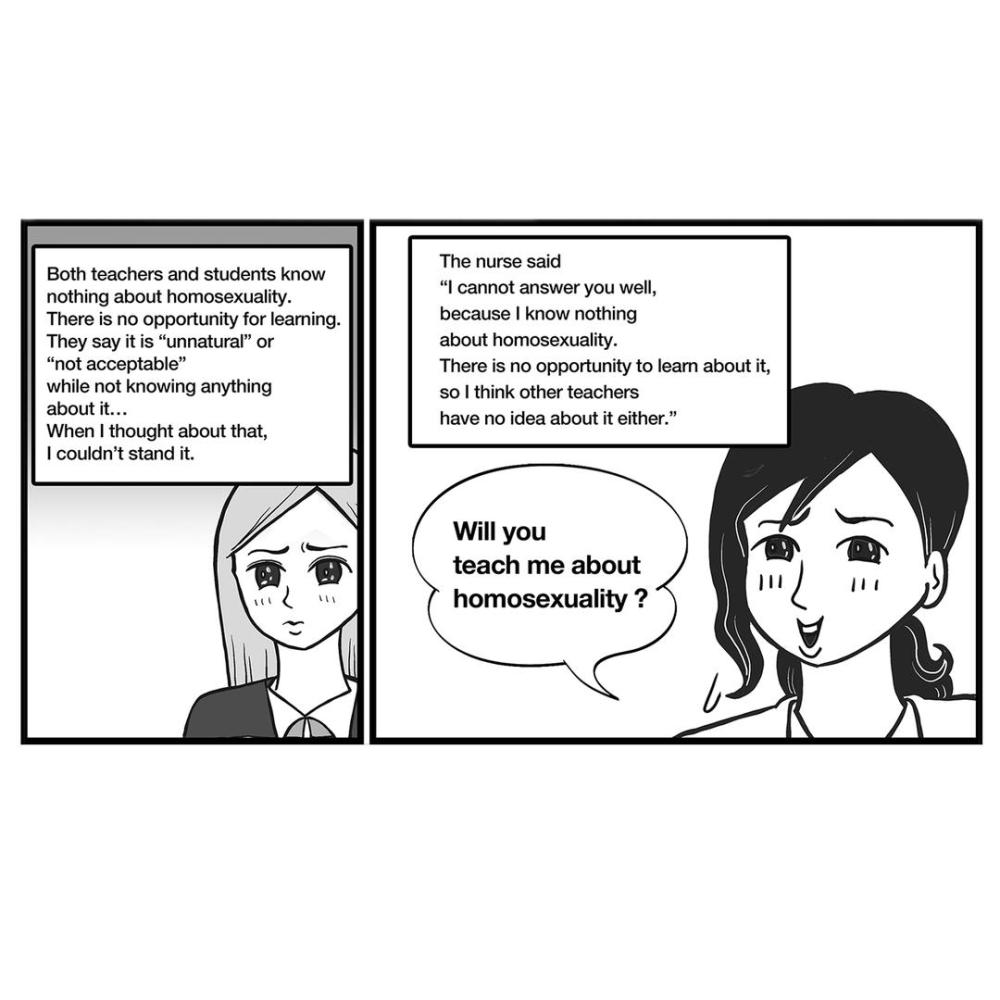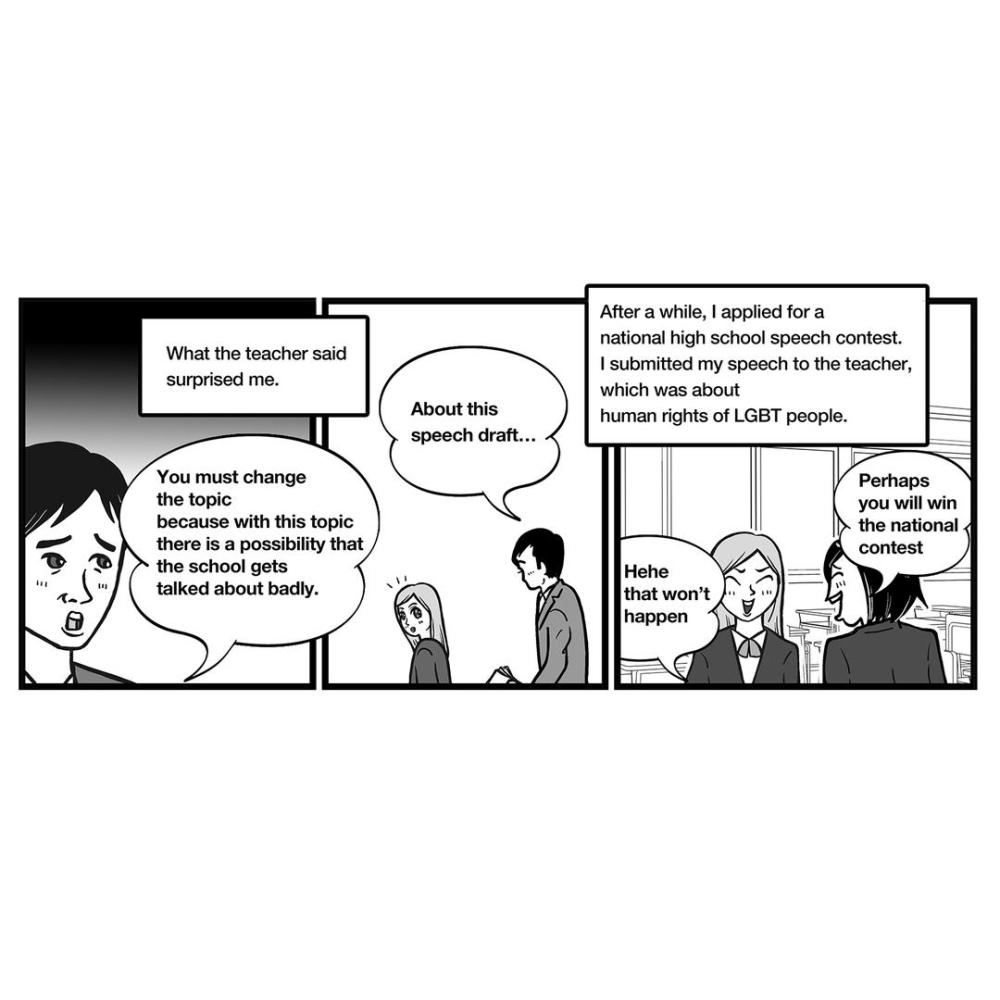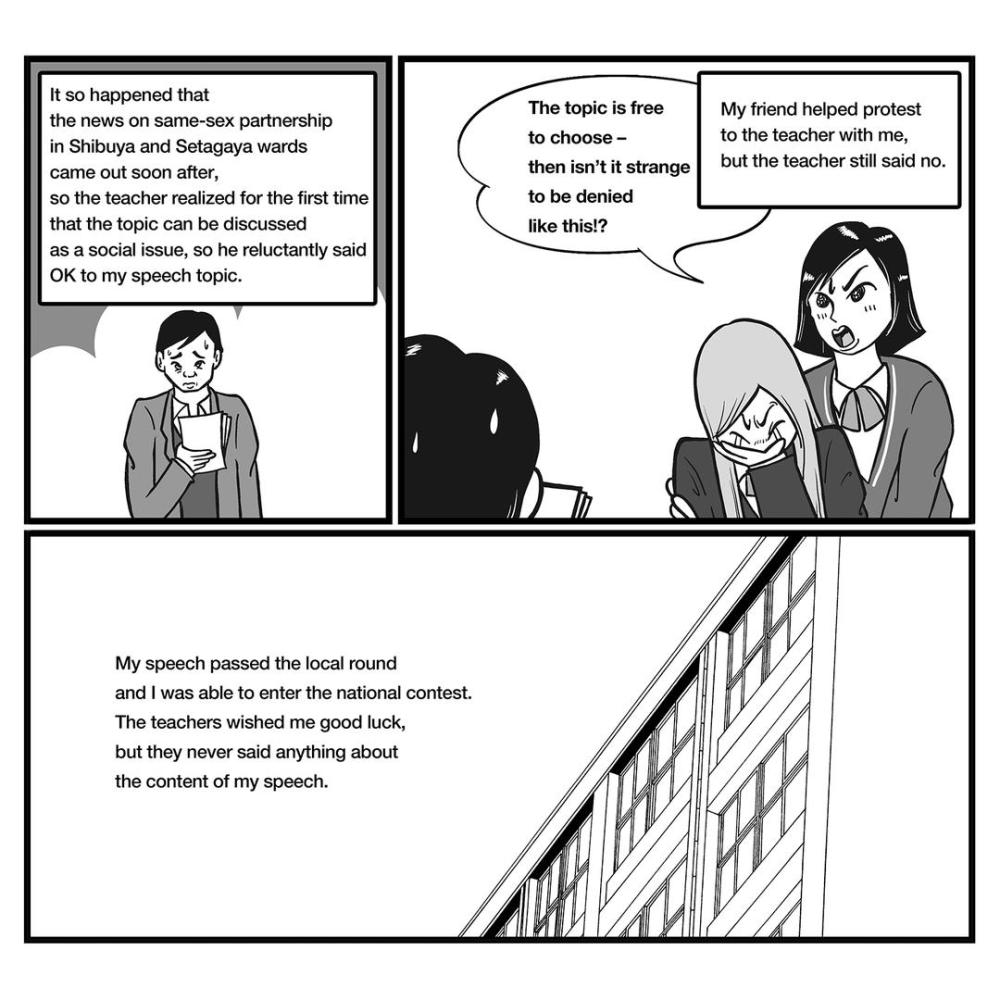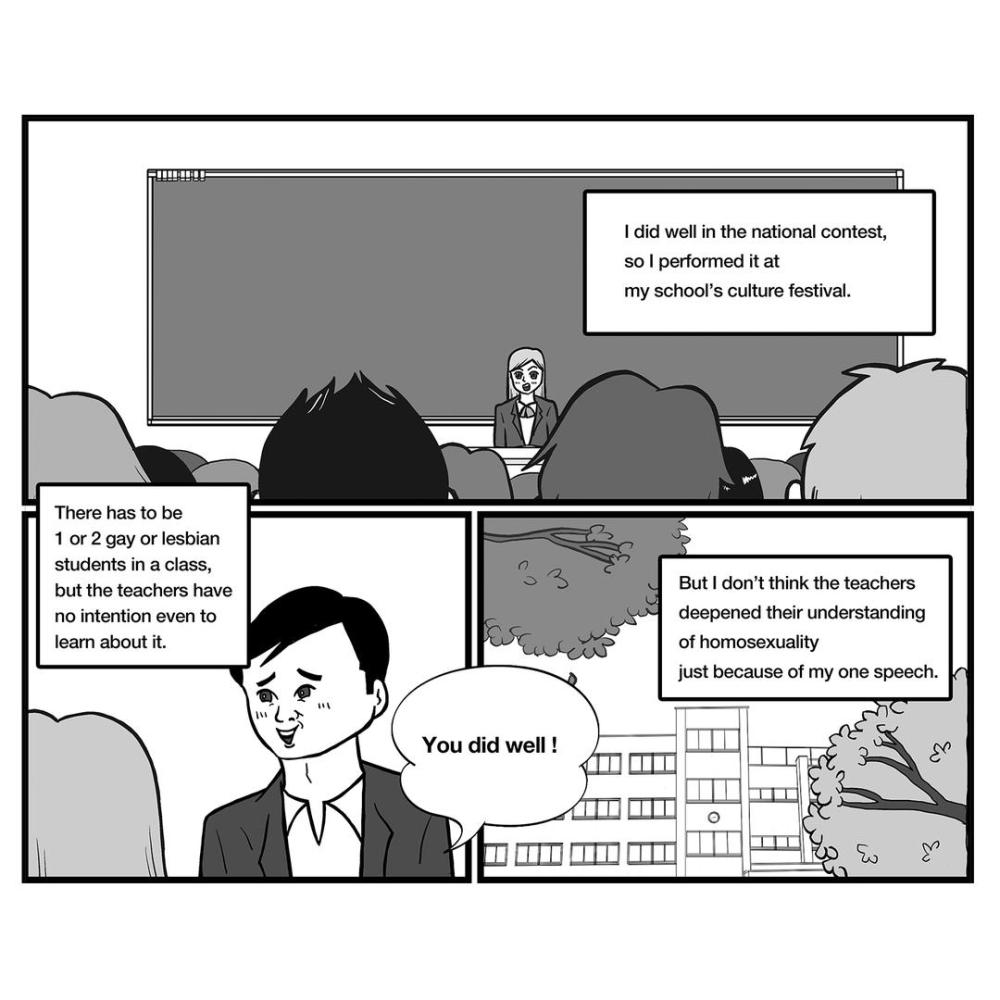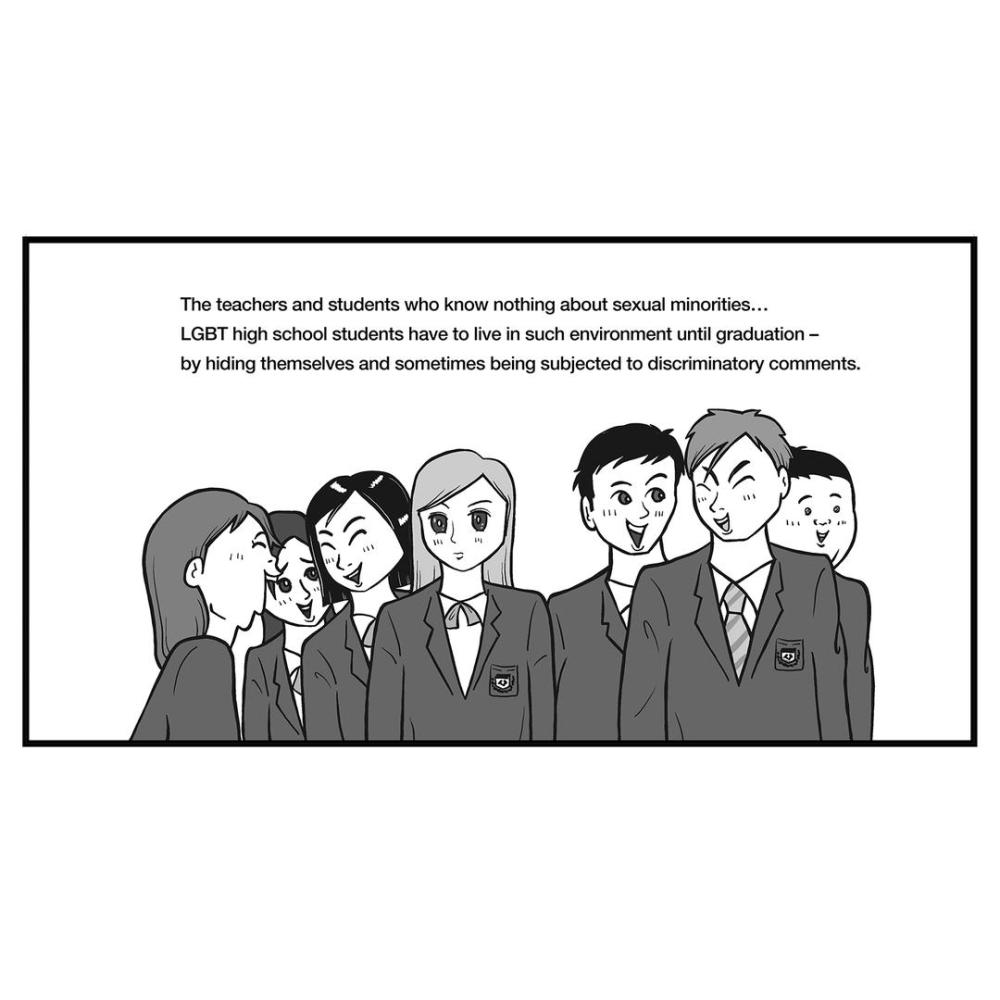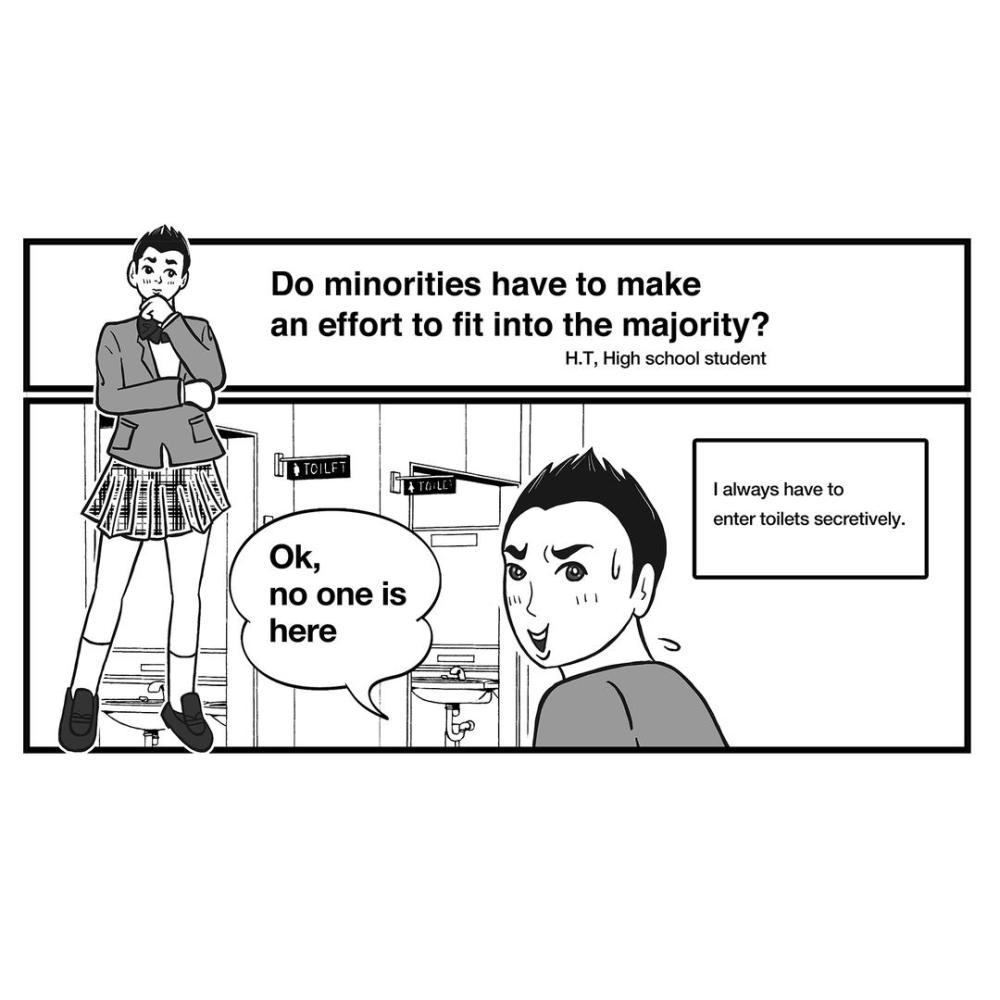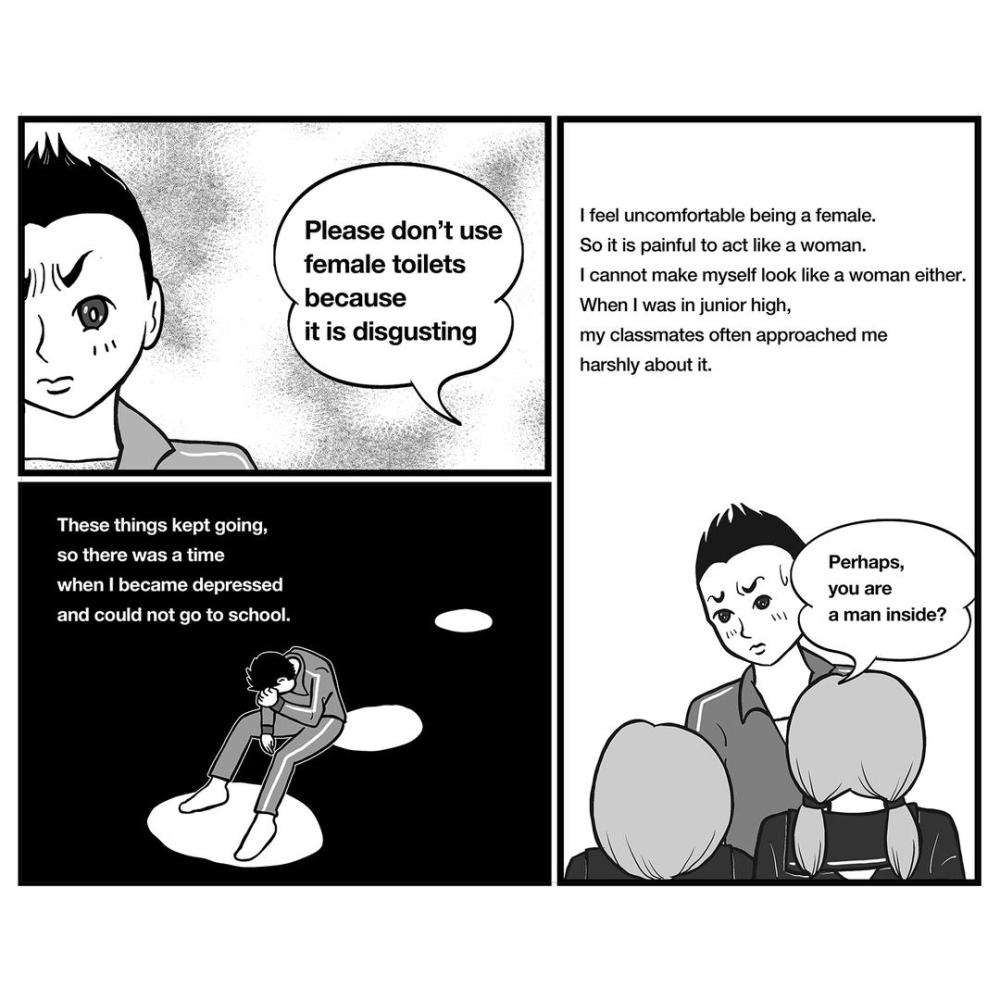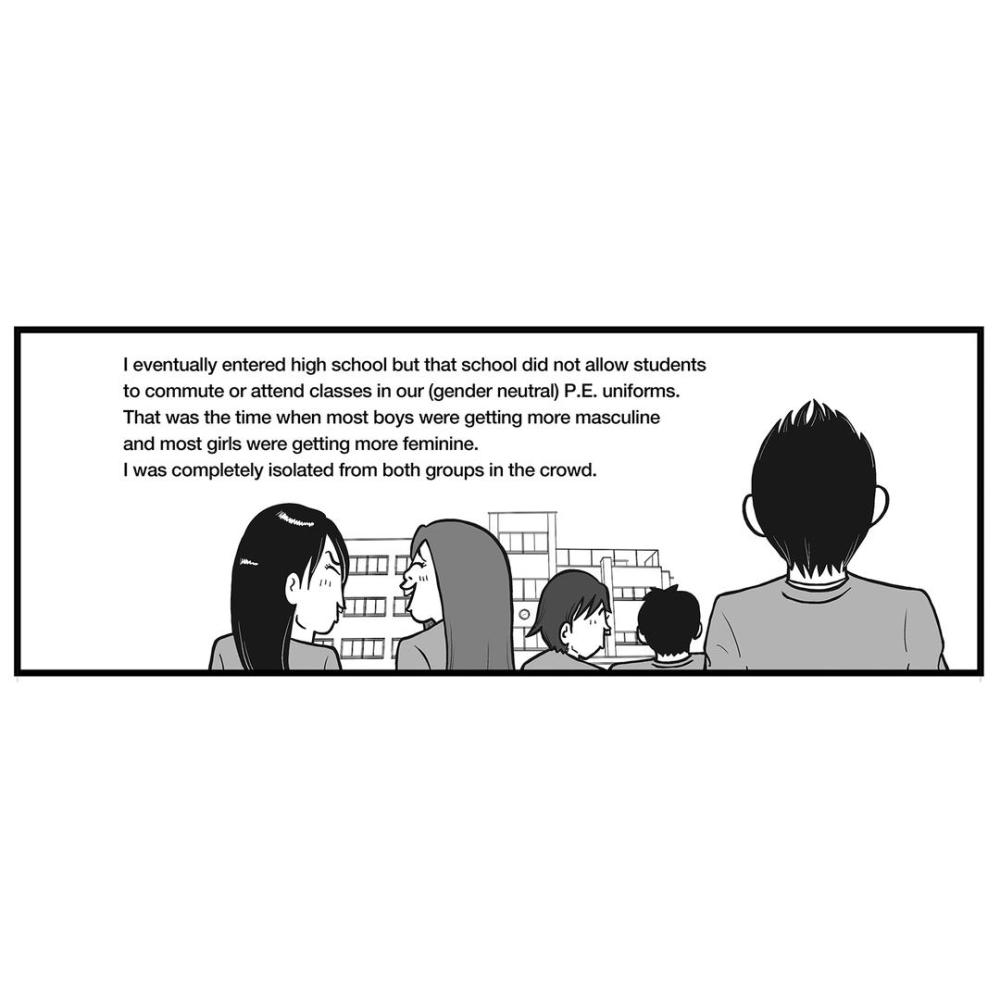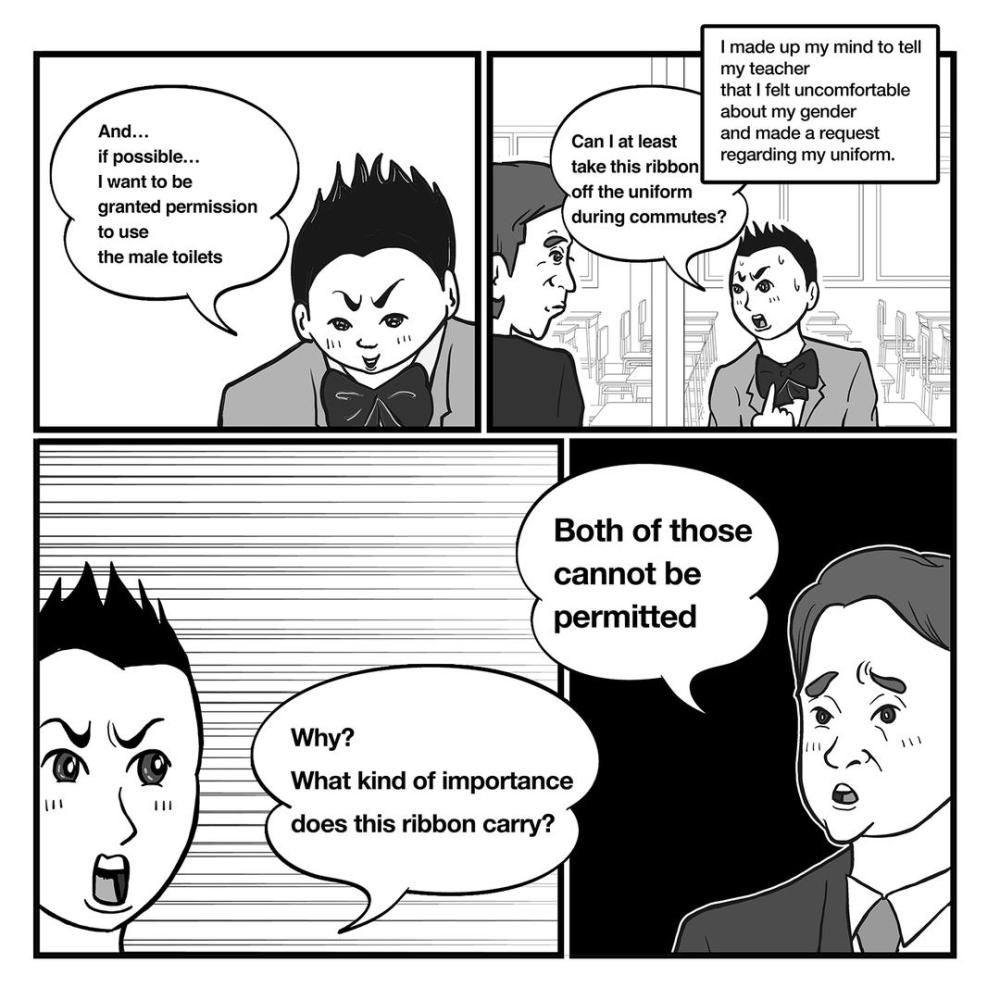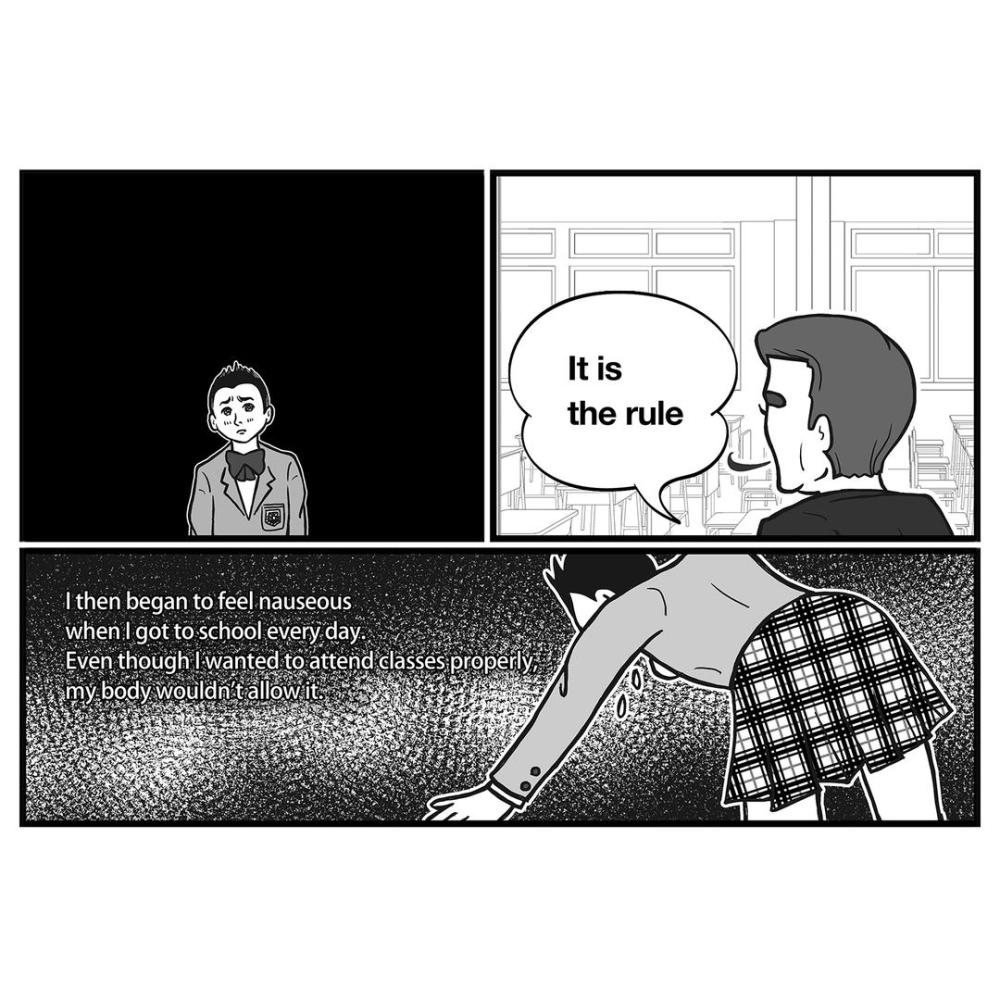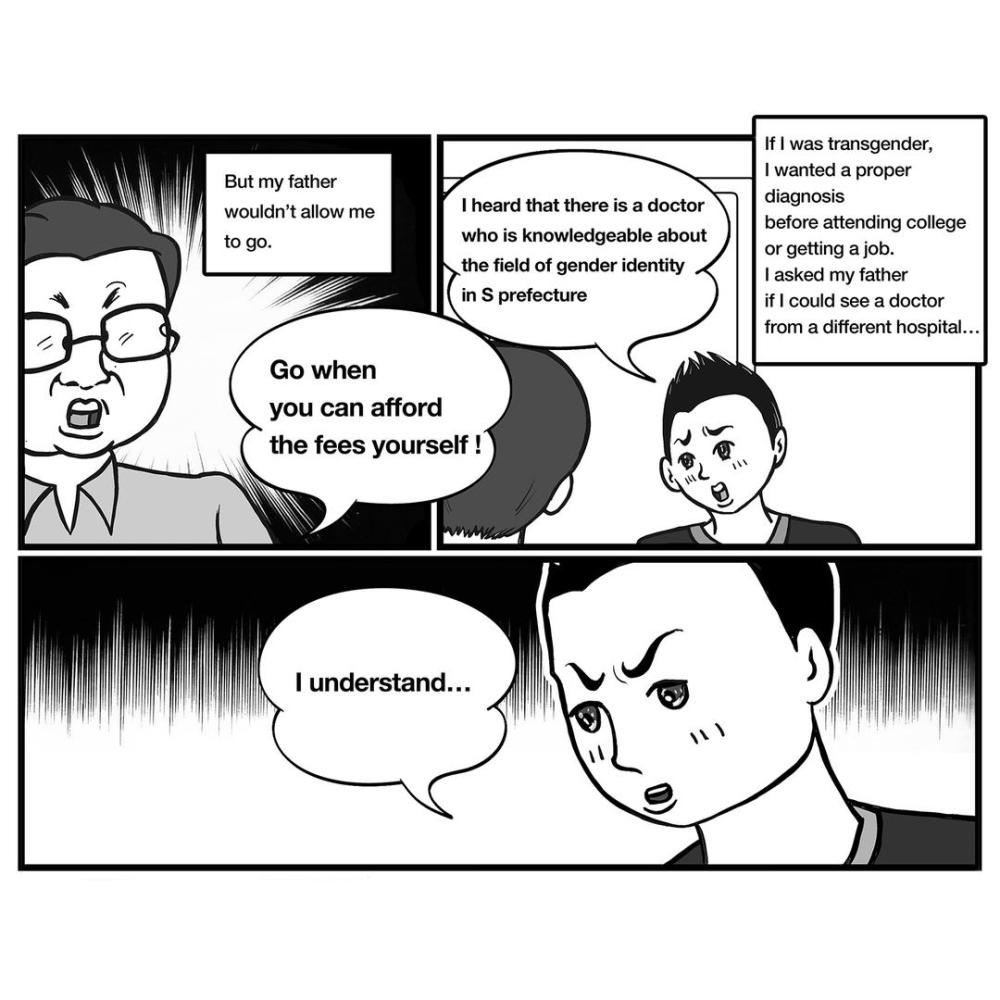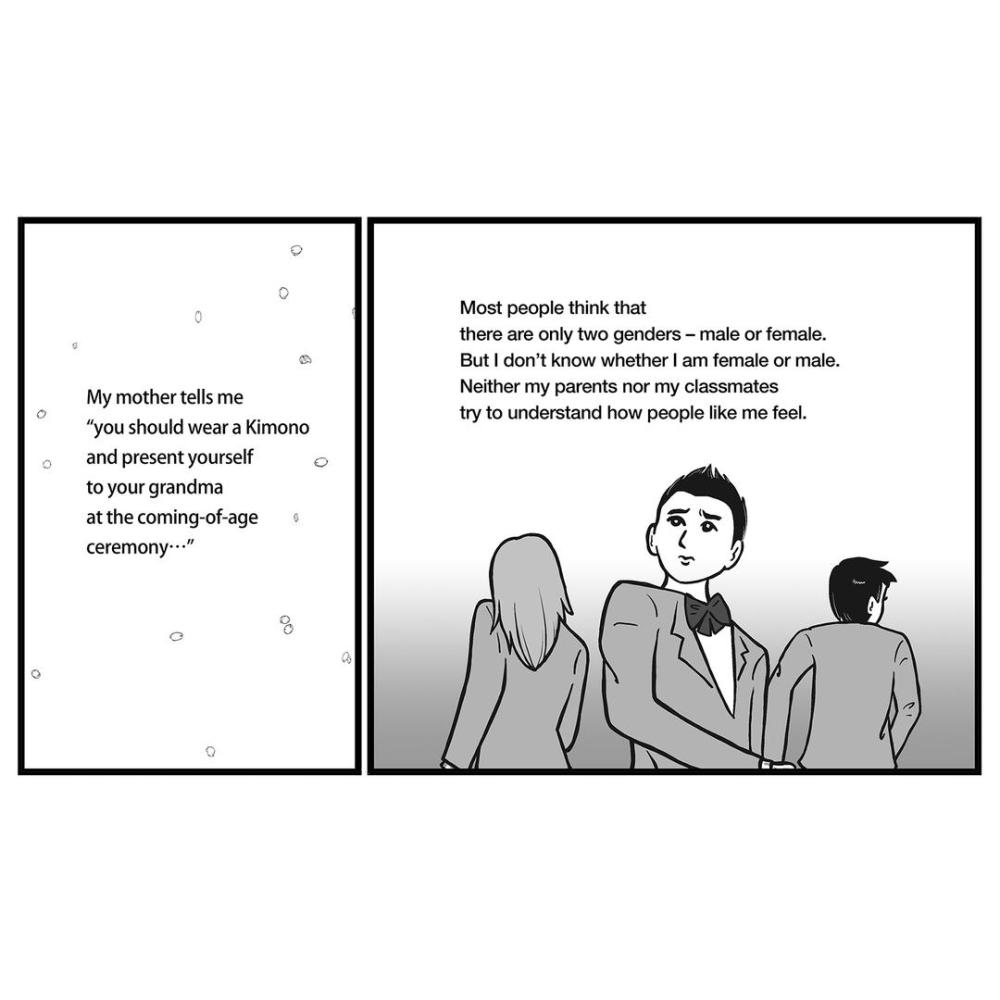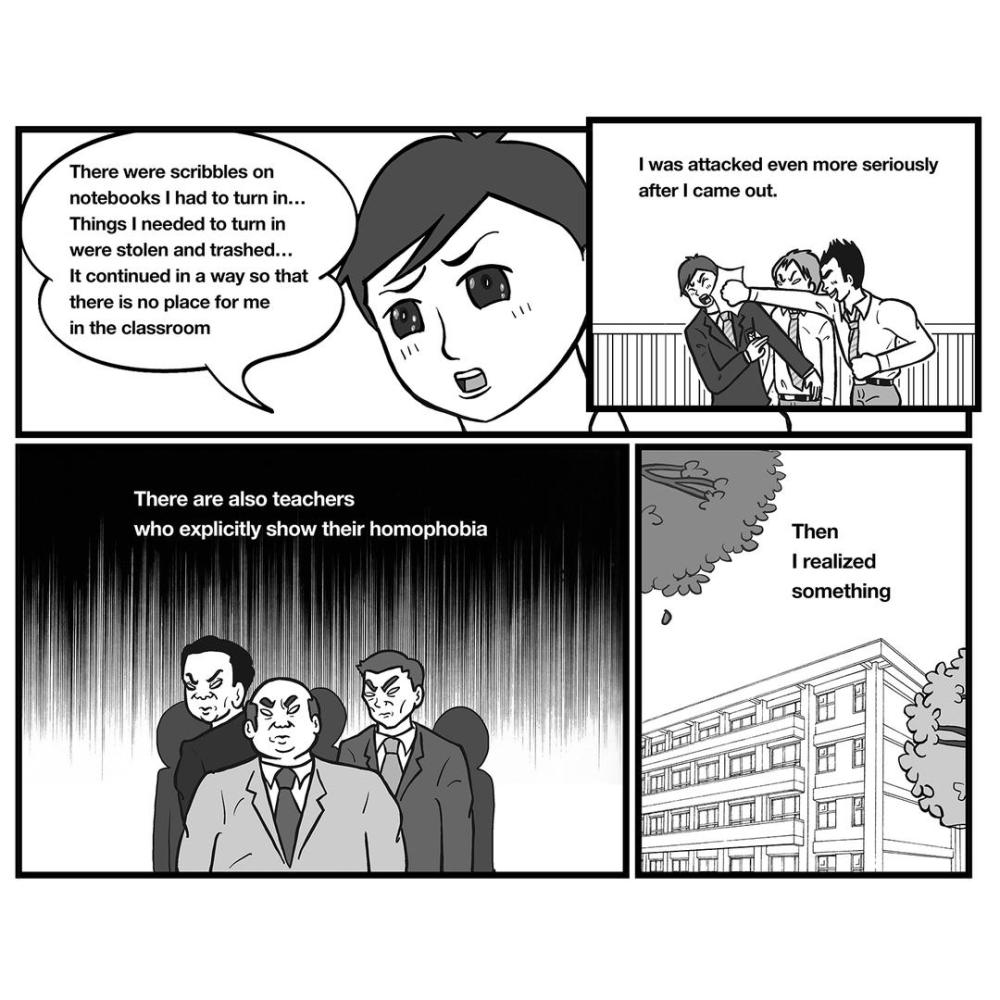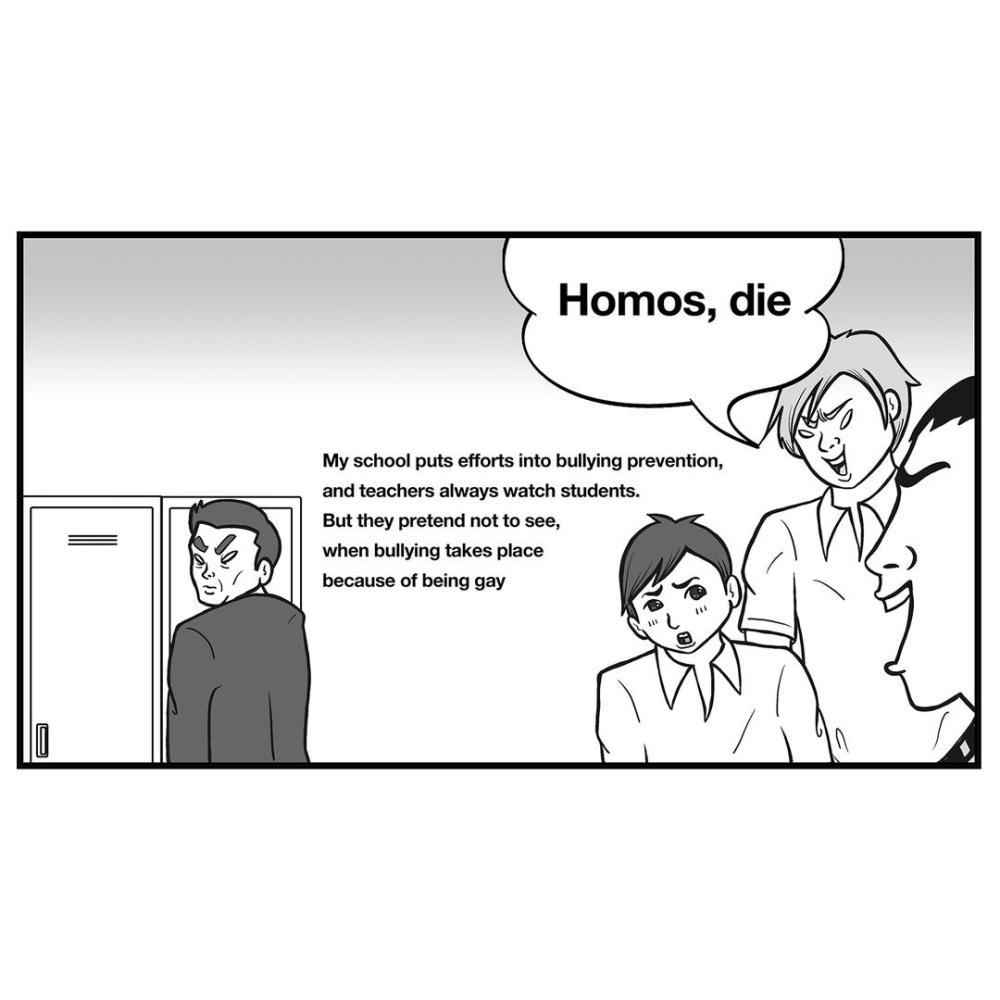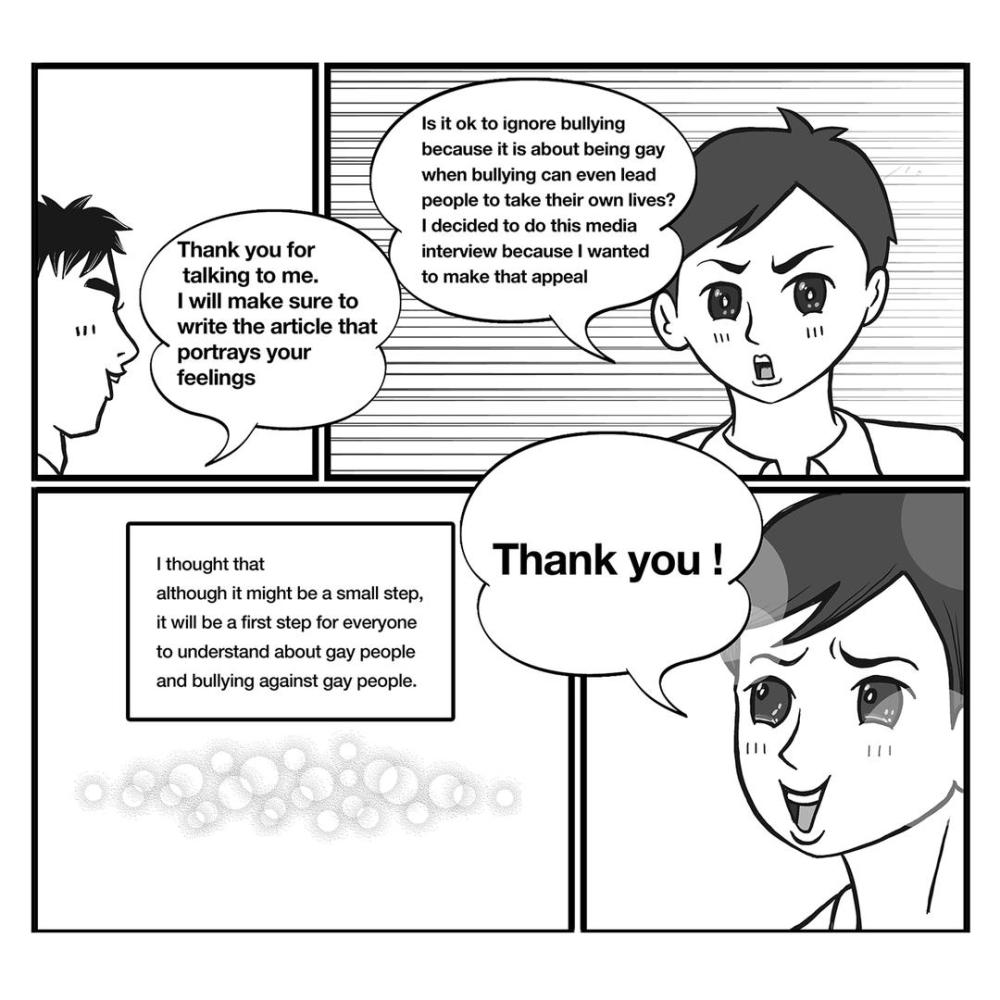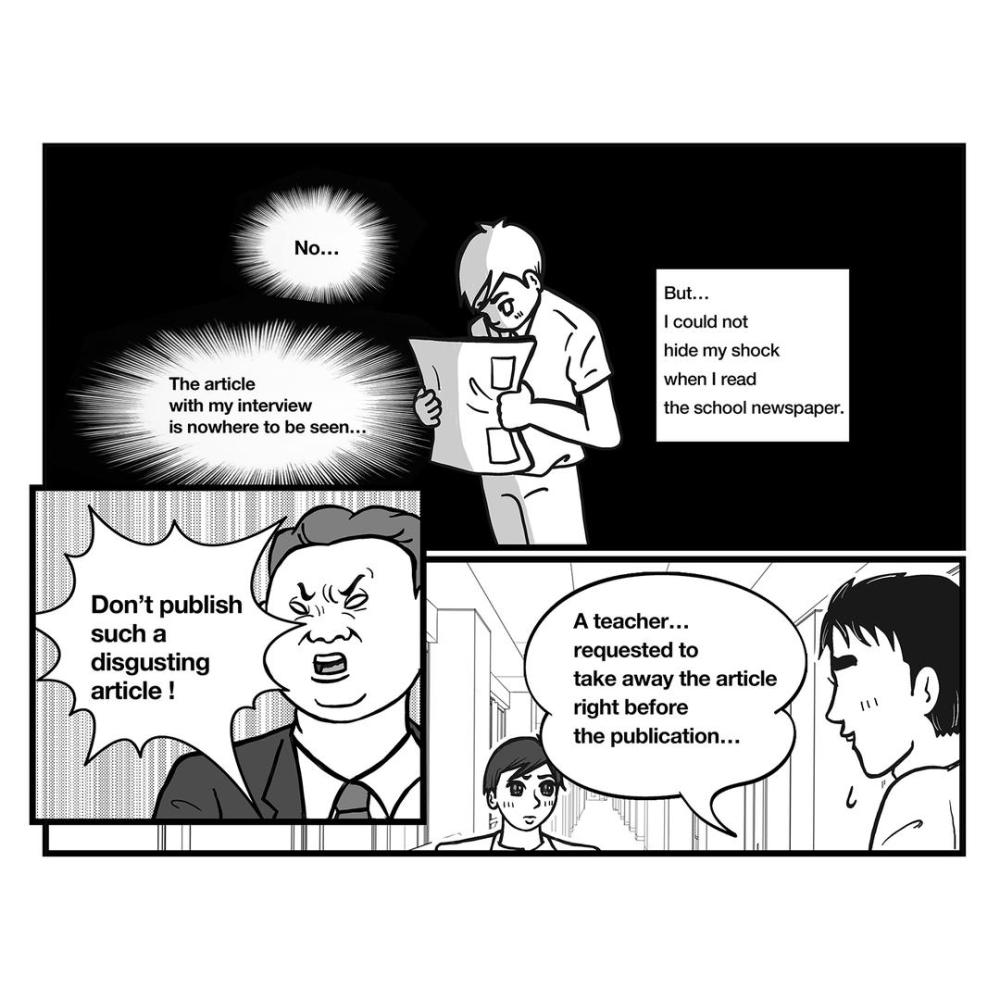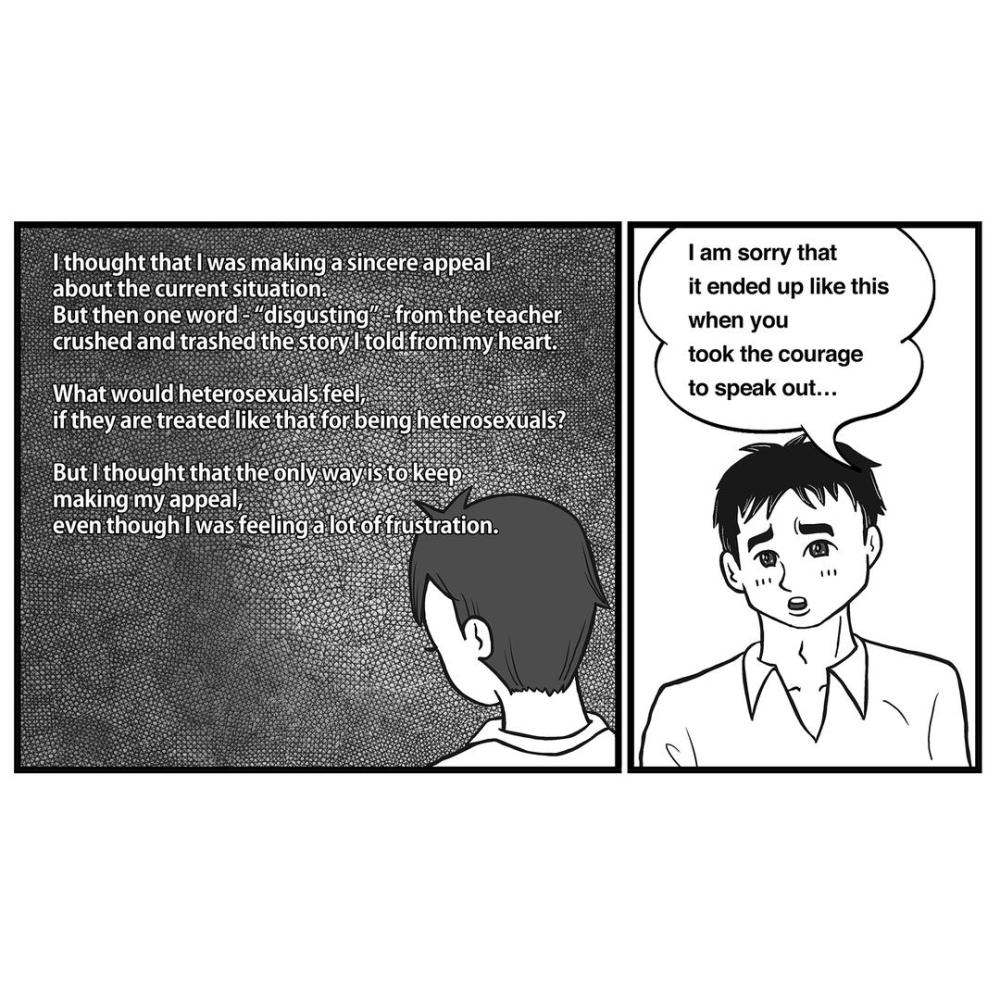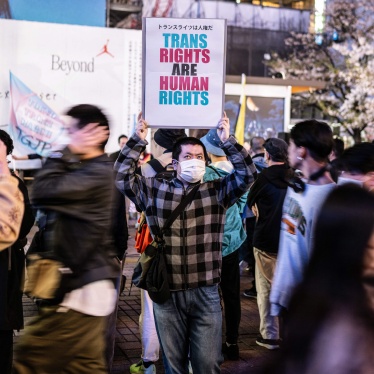School bullying is notorious in Japan and has been for decades. For LGBT kids in particular, the harassment, threats, and even violence in schools can be unbearable. School policies don’t adequately protect these students. At best, teachers are confused about how to handle LGBT bullying; at worst, they take part in it. Although same-sex marriage is being debated in Japan, the shortage of real LGBT role models is so stark that kids turn to gay manga characters for inspiration and very basic information about gender and sexuality. Researcher Kyle Knight speaks about Human Rights Watch’s new report, “The Nail That Sticks Out Gets Hammered Down,” and his idea to create non-fiction manga characters that give a glimpse into the real lives of Japan’s LGBT youth.
Why is bullying such a problem in Japan?
School culture in Japan is conformity-driven, so bullying singles people out if they’re different. Some scholars believe bullying is a strategy some teachers use, in effect, to outsource discipline to the student body – that a little bit of bullying or pressure to conform from peers will make everyone better behaved. Across Japan, there were 188,072 cases of bullying reported to the Ministry of Education in 2014. The media and government tend to only react to high-profile cases – namely those that end in suicides. But this doesn’t address the more widespread forms of bullying.
LGBT topics don’t appear anywhere in the national curriculum, and LGBT people aren’t mentioned in bullying prevention policies. In fact, the national bullying prevention policy says that one way to prevent bullying is by educating students on social norms. This sends the message that schools are there to enforce norms, including stigmatizing stereotypes that constrain LGBT children’s free expression, while framing it that kids who break norms are in the wrong.
What are the teachers doing?
Students brave enough to approach school staff about bullying test their luck.
One gay student said a teacher told him, “Just the fact that you’re standing here talking to me will make people think I’m gay.” One lesbian student told her teacher that she’d like to be out, and he said, “Okay, you can go ahead and do that but you can’t expect to succeed in the same way you would have if you just kept quiet.”
There is widespread ignorance among teachers. One teacher told me that when students came out to her and said they were being bullied for being gay, she did take it up with administrators. But she never told the administrators the kids were gay. She white-washed that out. She wasn’t comfortable. Although she did have a few gay friends, she said she didn’t know anything about LGBT people and looked “LGBT” up on Wikipedia before I met her, so she wouldn’t sound ignorant. She wasn’t prejudiced. She just didn’t know – because the government doesn’t mandate any kind of training.
Did you speak with anyone who stood out to you?
Kiyoko, now in university in Tokyo, told me about her harassment in middle school. She said that because she had cut her hair short, wore her uniform slightly differently, and didn’t act girly enough, other students would swarm her, roll up papers to beat her with, and tell her she wasn’t acting like a girl. Teachers would walk by and do nothing. At one point during our interview, she broke down and cried. Her friends’ advice was to just wait it out and try and leave the school district when she started high school.
This idea of sucking it up and waiting it out really struck me, that you needed to physically relocate yourself to avoid this treatment – a form of escape, rather than any hope for remedy or recourse. We heard this over and over.
What else did you hear repeatedly?
School uniforms caused a lot of anxiety for the students I interviewed. Japan typically introduces gender-segregated uniforms in middle school, so skirts for girls and trousers for boys.
Many transgender students, even if they have the courage to request to change their uniforms, are led to believe that the only way they could make the switch was to see a psychiatrist and be diagnosed with “gender identity disorder.” That’s because Japan’s law on transgender recognition is based on medical interventions. Technically, getting this diagnosis isn’t mandatory for students, but confusion over the ambiguous policy leaves many schools still believing this is the case.
The process of getting the diagnosis is really complicated. In many cases, students need their parent’s health insurance to cover much of the medical cost, as well as a psychiatrist at a gender clinic willing to see them, sometimes with their parents present. Then they’d need to subject themselves to being diagnosed with a mental disorder – one that has been roundly condemned worldwide as a pathological and regressive understanding of gender identity.
Bathroom access was also a huge problem for transgender kids. They were bullied if they used the bathroom of their sex assigned at birth and bullied if they used the bathroom of the sex they identified with. Some were able to persuade teachers to let them use the faculty bathroom or disability-accessible bathroom – but this didn’t solve the problem as those facilities were often sparse. And it certainly didn’t allow the trans students the dignity of bathroom access they deserve.
Ultimately, school rules around uniforms and bathroom use should be set with the children’s best interests in mind.
What else did transgender students face?
In Japan, there’s a law under which people can be legally recognized according to their gender identity. But the requirements to be recognized are intense and abusive. First, you need to be diagnosed with “gender identity disorder.” You’re then prescribed hormones and you’re forced to undergo sterilization – irreversible and highly-invasive surgeries. Additionally, these procedures are not covered by the national health insurance plan. So it’s extraordinarily expensive to live according to your identify.
The trans kids I interviewed, the kids who are being bullied in school today, see these as choices they’ll have to make in their future. How and when to get surgery, how to afford it, what it will feel like, whether they actually want it – they struggle with these questions. However, something interesting seems to happen as they get older. When I interviewed transgender university students, they say they felt an extraordinary sense of relief at the university because they could live and express themselves as they wished. There were no more uniforms, social groups were less gender-segregated, and faculty didn’t scrutinize their appearance. As a result, they stopped thinking they had to be either strictly male or female. Some thought, maybe I don’t want that diagnosis. Maybe I don’t want to be sterilized.
Still, these were very difficult stories to hear because the students knew that, no matter how much their ideas had changed and their freedom of expression opened up, the law remains. If they want their gender legally recognized, they really have to take these steps.
Where do LGBT kids find their information?
Most of them turn to the Internet and to comic book characters. The “Boys Love” genre of comics have gay characters, but they are mostly read by young girls, and the characters aren’t taken to be real. When kids came out to their classmates, their classmates said, “Oh, we thought this was something just in comic books.”
What the comic books captured was the isolation these kids felt. Many kids we spoke with said they knew the characters weren’t real, and that they wanted more real role models – not ones based on fashion.
So you had some created.
We took the stories of four people we interviewed and made them into comics. We hired the first openly gay manga artist, Taiji Utagawa, to do it.
These stories will unfortunately resonate with a lot of the people we met. One is about teacher ignorance, another is about feelings of deep isolation. The third focuses on trying to fit in at school, and the last is about overtly homophobic teacher behavior.
One thread that runs through all of them – and Human Rights Watch’s report – is how schools favor and enforce conformity. Schools do this in positive ways, like by teaching social norms such as compassion, but also in negative ways, like by rejecting what’s different.
One of our manga stories features a girl participating in a national speech contest. She proposed speaking about LGBT rights, and her teacher told her no, “it’ll make us look bad.” But she did it anyway and was awarded fourth place at the district level. Because she brought honor to the school she was allowed to give the speech at the school’s culture festival. Afterwards, the same teacher congratulated her, and said he was more familiar with the topic because same-sex marriage in Tokyo was in the news.
What do you want to see happen?
Japan’s anti-bullying law, which was written up in 2013 after a bullying-related suicide, is up for review. We want the Japanese government to incorporate LGBT students in the bullying policy. The government should make it clear that students who want to change their uniform or go to a different bathroom don’t need to be diagnosed with a mental disorder. Diversity needs its own protection, and that starts by naming categories of especially vulnerable people.
Japan has the capacity to solve this problem. It has a highly functional government and school districts that will do what the government says. Japan is already a leader in LGBT rights at the United Nations as it voted for the two historic LGBT rights resolutions in 2011 and 2014. Now the issue needs to be addressed on their own soil.
This is the time. LGBT issues are no longer politically toxic in Japan, talk about same-sex marriage is in the public sphere. Last December, a local assemblyman tweeted that homosexuals need “curing.” People shamed him so intensely that he rescinded it. Six years ago, Tokyo’s mayor said the same thing and nothing happened. This is a huge shift. The balance is tipping.
This interview has been edited and condensed.
